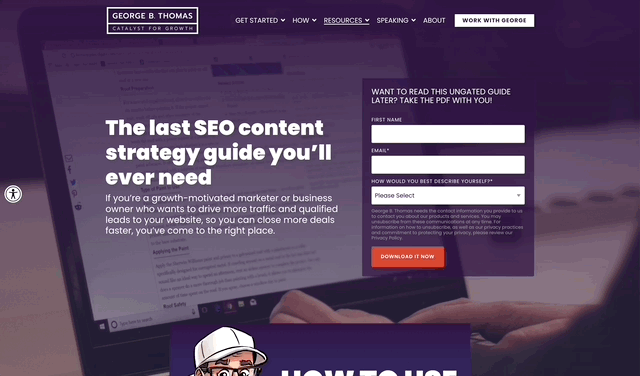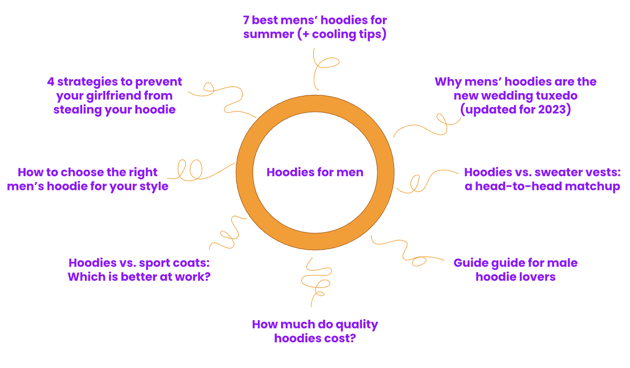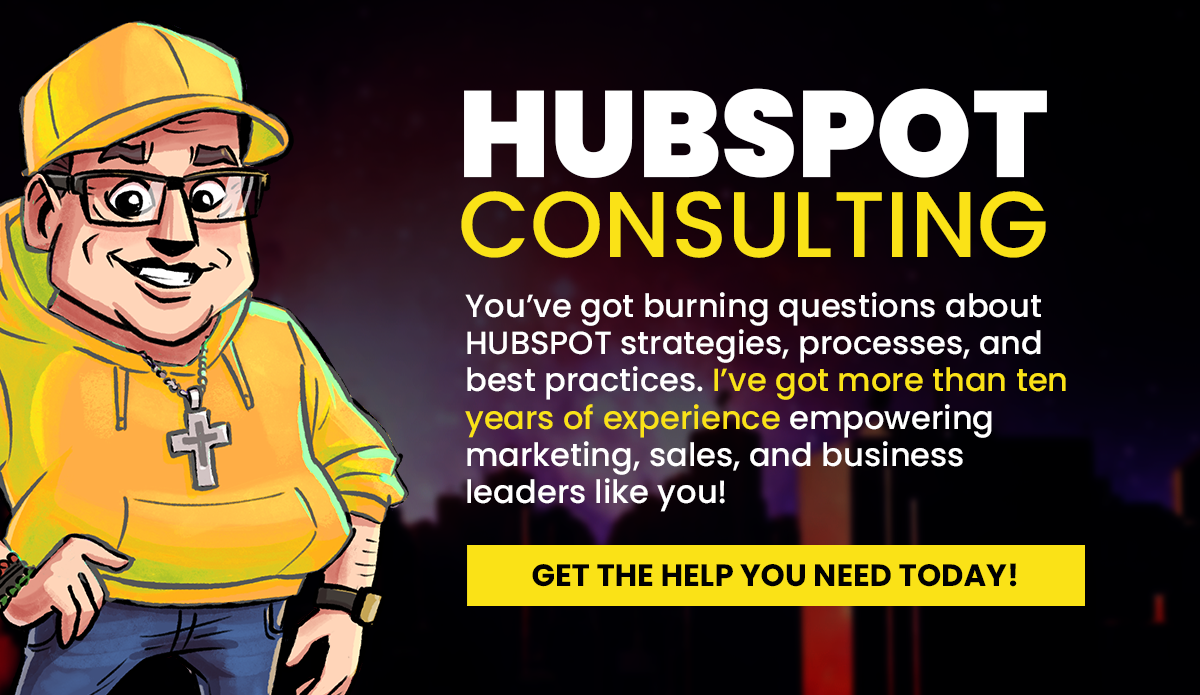5 min read
Pillar page strategy: 4 mistakes that are costing you (+ examples)
 Liz Moorehead
Dec 16, 2022 1:56:24 PM
Liz Moorehead
Dec 16, 2022 1:56:24 PM
Welcome back to another edition of Ask a Content Strategist! This week, we're digging into one of my favorite topics: pillar page strategy. Specifically, what well-meaning, incredibly talented content marketers and business leaders like you are doing wrong with your pillar pages that are potentially stunting (if not completely) undercutting the results you should be seeing with your content.
As a quick refresher — because I'm a huge fan of guaranteeing we're all on the same page with shared definitions — a pillar page (sometimes called pillar content) is a piece of ungated, longform SEO content that addresses a broad topic in detail. Pillar pages live at the center of a topic cluster, a network of linked content that all relates to that one topic.
For example, "Instagram Marketing: the Ultimate Guide" would be a great example of a pillar page topic, which would live at the center of a cluster dedicated entirely to topics about Instagram marketing.
🚨 Masterclass registration open: Become an SEO content strategy master in 2023
Now, if you're scratching your head about what a topic cluster is (and why we're even creating topic clusters and pillar pages now), here's a quick video to get you caught up:
The bottom line is that if your organization has an SEO content strategy earmarked as a mission-critical component to drive organic traffic, leads, and sales online, the topic cluster and pillar page model is your one-way ticket to success.
However, I've spent the past eight years as a content strategist who has worked inside of agencies and in-house to enable brands across every conceivable industry you can imagine to leverage topic cluster and pillar page to drive bottom-line results. In that time, I've been amazed at how many different ways pillar pages specifically (from strategy and optimization, to staging and publication) go horribly wrong.
🔎 Related content:
In fact, I feel a kinship with the pillar page. Like the pillar page, I'm also absurdly large (six feet tall, to be exact), very powerful, and often extremely misunderstood. I also spew out a lot of words on topics. For example, I am the queen of giving 18-paragraph monologues to "Yes or No?" questions without ever giving a "yes" or "no" answer.
So, my goal today is very simple! I am going to unpack the most common mistakes you're making with your pillar page strategy that are stunting your ability to get the results you're looking for from your content!
Are you ready? Let's dig in ...
1. Your pillar page is gated ❌
If your pillar page is gated behind a form, meaning people can't access it unless they give you information to either access a downloadable PDF or a full-page piece of content ... congratulations! You've published an ebook, not a pillar page.
🔎 Related: What is great content really? (HubHeroes Podcast)
The whole point of a pillar page is that it is an SEO play. So, if you're gating all of the content from your pillar page, you are defeating the entire purpose of the strategy. Google and other search engines need to be able to crawl the content, and those little robot gremlins can't do that if you're hiding all the goods behind a form!
"But Liz, this is a lot of expertise and goodness, and we don't want to just give it away!"
I hear you, and also I've got some good news for you. Your pillar page can still be a lead acquisition play even if you have it ungated. To show you what I mean, let's take a look at George's SEO content strategy guide, which is a textbook pillar page:

You can put a lead form at the top of the page as an option for your visitors, but make it clear they can still scroll down to access the material without having to fill out the form!
Do people actually convert? They definitely do. In fact, historically speaking, most of the pillar pages I've been involved in creating that use this approach often deliver 15% - 20% conversion rates, if not higher.
2. Your linking strategy is wrong ❌
The only way your topic cluster will function properly is if every single piece of subtopic content you've created in your topic cluster links back to the pillar page, and the pillar page also links out to every single piece of subtopic content.
If you don't do that linking in both directions, your topic cluster will not function from an organic growth perspective the way you want it to. Looking at the below topic cluster example of what I usually see as a common mistake ...

... folks will either have the pillar page ("Hoodies for men: the ultimate guide") link out to everything, but fail to link all of those subtopics (e.g., "How much do quality hoodies cost?") back to the pillar page. Or, they'll link to the pillar page from each of those subtopic content pieces, but the pillar page won't link back to them.
🔎 Related: How to measure content marketing ROI (HubHeroes Podcast)
You need to have linking in both directions, party people. Otherwise, you're going to do a lot of content creation work only to get lackluster results in return for your efforts.
2. You create a glorified blog ❌
Recently, I've had to evaluate two different pillar pages from two different companies and they both had the same problem:
- They thought they had written a pillar page.
- They had actually written a very long article optimized for a long-tail keyword that should never, ever have been selected for a pillar page.
Pillar pages should be optimized for a broad keyword (e.g., "website redesign") and not for a long-tail keyword like you do with blogs (e.g., "HubSpot vs. Wordpress for business websites"). And you should optimize, from an on-page SEO perspective, accordingly ...
- H1: Your H1 should lead with or only contain your broad keyword, and be supplemented in supporting copy as to what it is.
- URL: The URL should ONLY be the keyword. For example, "yourwebsite.com/seo-content-strategy" is RIGHT, and "yourwebsite.com/ultimate-seo-content-strategy-guide" is WRONG and not how you should optimize the URL.
How do you know if you're gone astray?
- Your keyword is more than two to three words — I'm sure there are exceptions to this rule, but for the most part, this rule holds.
- The keyword or title you're thinking of has words like "how to" in it, you've got a problem. Ultimate guides may include how-tos and step-by-step processes nested within certain sections, but the leading keyword should not be a how-to.
- On a related note, if your URL is something along the lines of "yourwebsite.com/how-to-create-inbound-marketing-strategy-examples-templates" ... just no. No no no.
Bottom line, create a pillar page, not a glorified blog post.
3. Horrible user experience ❌
I'm not saying you need to have insane graphic and web design skills, but there are three boxes you need to check to make the HUMAN BEINGS not absolutely loathe, despise, and abominate your pillar page:
- The substance of your pillar page should be so dang good and comprehensive, it becomes the last search result your ideal customers will ever need on this topic. They should be saying, “Oh my gosh, finally! This is exactly what I’ve been looking for! I have achieved content nirvana!
- The storytelling on your pillar page is compelling, intuitive, and engaging – in short, it’s human. Because it doesn’t matter how much detail you put on your pillar page; if you don’t communicate information like a human through story and smart narrative structure, you’ll lose your audience.
- The visual structure and design of your pillar page doesn’t suck. I love pillar pages that keep me visually engaged and stimulated as I move through it. I’m not saying you have to suddenly go all out with design, but be purposeful in how you treat your headers and subheaders. Use images and graphics (only when relevant), bulleted lists, and more.
Bottom line, if you create a word-wall piece of pillar content that no one wants to engage with, explore, or read, you're going to have a high bounce rate which will really hurt your ability to rank well.
Why? Because your content should be built for humans first and not make them hate you for creating a pillar page that is more effort than its worth to understand or navigate. If you don't do that, they'll land on your page, quickly exclaim "No, thank you!", and return back to their search results.
4. You only create SEO content ❌
Finally, search isn't everything, OK? Look, topic clusters and pillar pages can do a lot for your inbound strategy, in terms of driving qualified traffic and leads for your company.
🔎 Related: The last SEO content strategy guide you'll ever need
But if you're not also creating sales enablement content — case studies, articles about your pricing or what it's like to work with you, buyer guides, service page videos — or customer delight content that is hyper-specific to you and your products/services, you're only doing part of your job with your content strategy.
The most successful content strategies don't rely exclusively on SEO content to deliver results. You should be looking at your entire funnel (or flywheel) stage and creating your content to make your prospects and customers where they are.




